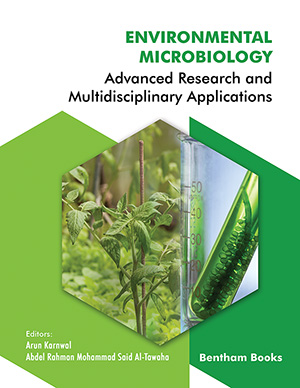Abstract
Unchecked disposal of substances or compounds such as organic/inorganic
heavy metals, polychlorinated biphenyls (PCBs), herbicides, pesticides, phenolic and
nitrogenous compounds, and polycyclic aromatic hydrocarbons (PAHs) ubiquitously
present in the environment poses a global concern. This requires constant monitoring of
environmental pollutants. Biological-based monitors and biosensors with high
specificity and sensitivity are applied to monitor and check the level of pollutants.
These are biological-based methods used for the intervention of environmental
pollutants as analytes. The widely used biosensors are made by immobilizing various
enzymes, antibodies, whole cells in the devices, and transducers. Microbial biosensor
devices sense the substances in the environment through the various biochemical
reactions of the microorganisms incorporated in the devices. However, with the ease of
genetic modification techniques like genetic engineering technologies, various
microorganisms have gained immense popularity as ideal candidates for developing
biosensors. The microbial biosensors' inexpensiveness, compactness, and portability
offer advantages over conventional chemical sensors. The most significant aspect of
microbial biosensors is the in situ detection capability, and real-time analysis has
enhanced their acceptability and applicability in environmental monitoring. The
following chapter deals with microbial biosensors to detect air, water, and soil
pollutants
Keywords: Analysis, Biosensors, Environment, Genetic Engineering, Microbes, Monitoring, Pollutants, Portability.






















